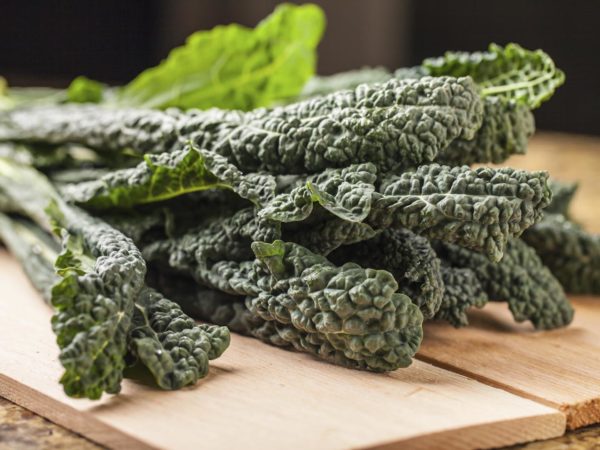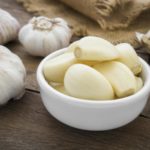Tuscan Kale

Once you grow nero di Toscana or Tuscan kale (Brassica oleracea) (also known as lacinato kale, dinosaur kale and palm tree kale) you won’t want to bother with other varieties. It is unfair to pit any other kale against this superior Italian variety: it tastes better, is easier to use, and is extremely resilient.
To begin, Tuscan kale, like all kales, is extraordinarily nutritious: a cup provides more than 100 percent of the daily value (DV) of vitamins K and A, and 88 percent of the DV for vitamin C. Like other members of the brassica family such as cabbage, collards and Brussels sprouts, kale is a rich source of organosulfur compounds that have been linked to cancer prevention.
It’s also a productive plant for the small garden. Depending on the climate you garden in, a healthy specimen of Tuscan kale can reach two to three feet tall, sometimes even taller. Individual plants look like they would be right at home in some prehistoric scene with their palm-like forms, especially as you trim off lower leaves.
In cool-summer climates, kale is started in the early spring; however, plants actually love a little frost, so don’t be afraid to start early. In warm-summer climates with relatively mild winters such as Arizona, it is a cool season crop. It can be sown directly into the garden, or started in pots. In order to avoid nursery-grown starts that are often root-bound and crowded, it is best to sow seed yourself. Whether you start plants in pots or direct-seed, make sure you end up with plants that are spaced a little more than a foot apart, and preferably staggered from one row to the next.
In general, kale likes rich soil and plenty of sun; full sun is best even here in the desert. It does best with moderate, consistent moisture and a steady supply of nutrients. This plant loves the cold and needs no frost protection where we live. I am fortunate enough to be ignorant of just how much cold kale can take, but if you suspect your weather will be too cold, cover plants with a frost cloth.
As for pests, in our garden, aphids have been the greatest challenge. Trim off heavily infested leaves and make a regular habit of spraying plants (including undersides of leaves) with a forceful jet of water. This will discourage the aphids. You can also use organic insecticidal soaps or neem oil. Lacewing eggs, available from garden supply houses, dropped around the base of the plants will unleash an army of hungry larvae that relish the fat, sweet aphids. Tuscan kale is not immune to such stresses, but when issues are addressed, these plants can bounce back like few others.
At harvest time, trim off leaves as you need them and use fresh. Try Tuscan kale in Tuscan Kale Salad, Potatoes with Kale, Hot and Sour Greens, Curried Greens, or simply lightly steamed. Once you have your own supply of fresh, homegrown kale, you may never buy it from the produce stand again, especially with this tasty, undemanding variety!
By Jared R. McKinley, Guest Commentator
DrWeil.com News














